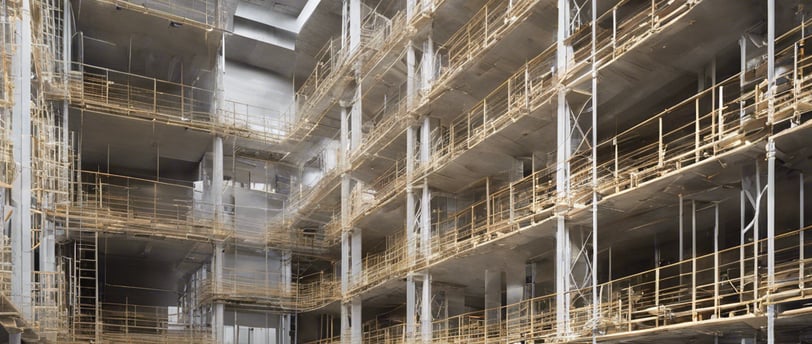Part L of the Conservation of Fuel and Power regulations in the United Kingdom


Part L of the Conservation of Fuel and Power regulations in the United Kingdom is a crucial component of building standards aimed at reducing energy consumption and carbon emissions. These regulations have evolved over time to address the pressing need for sustainability and environmental responsibility in the construction industry. In this essay, we will delve into the history, objectives, key provisions, and impacts of Part L, highlighting its significance in the broader context of energy efficiency and conservation.
History and Evolution:
The origins of Part L can be traced back to the mid-20th century when concerns about energy security and environmental degradation began to gain prominence. In the UK, the oil crises of the 1970s served as a wake-up call, prompting policymakers to consider measures to reduce energy consumption in buildings. The first version of Part L was introduced in the Building Regulations in 1985, primarily focusing on improving thermal efficiency in new constructions.
Over the years, Part L has undergone several revisions and updates to keep pace with technological advancements and changing energy efficiency standards. Each iteration has sought to raise the bar for building performance, incorporating stricter requirements for insulation, heating systems, ventilation, and renewable energy integration.
Objectives:
The primary objective of Part L is to promote energy efficiency and reduce carbon emissions associated with building operations. By setting minimum standards for thermal performance and energy usage, Part L aims to:
Reduce Energy Consumption: By improving the thermal efficiency of buildings, Part L helps lower the amount of energy needed for heating, cooling, and lighting, thereby reducing overall energy consumption.
Cut Carbon Emissions: Buildings are significant contributors to carbon emissions, primarily through the use of fossil fuels for heating and electricity. Part L seeks to mitigate this impact by encouraging the adoption of low-carbon technologies and renewable energy sources.
Enhance Comfort and Health: Alongside energy efficiency, Part L also considers factors such as indoor air quality, thermal comfort, and daylighting, ensuring that buildings provide healthy and comfortable environments for occupants.
Drive Innovation: By setting ambitious targets and performance standards, Part L stimulates innovation in building design, construction techniques, and energy-efficient technologies, fostering a culture of sustainability within the construction industry.
Key Provisions:
Part L encompasses various requirements and provisions designed to improve the energy performance of buildings. Some of the key provisions include:
Fabric Efficiency: Buildings must meet minimum standards for thermal insulation and air permeability to reduce heat loss through walls, roofs, floors, and windows. This involves the use of high-performance insulation materials and the elimination of thermal bridging.
Heating and Cooling Systems: Part L sets requirements for the efficiency of heating, cooling, and hot water systems, promoting the use of condensing boilers, heat pumps, and other low-carbon technologies. It also mandates the installation of efficient controls to optimize energy use.
Renewable Energy: New buildings are often required to incorporate renewable energy technologies such as solar panels, wind turbines, or heat pumps to meet a portion of their energy demand from sustainable sources.
Air Tightness and Ventilation: Part L emphasizes the importance of air tightness to prevent unwanted heat loss and drafts, while also ensuring adequate ventilation to maintain indoor air quality and prevent moisture build-up.
Compliance and Certification: Building designs must undergo energy performance calculations and comply with prescribed targets to demonstrate compliance with Part L. Certification schemes such as Energy Performance Certificates (EPCs) are used to assess and verify the energy efficiency of buildings.
Impacts:
Part L has had a significant impact on the construction industry, driving improvements in building performance and energy efficiency. Some of the notable impacts include:
Market Transformation: Part L has transformed the market for building materials, products, and technologies, incentivizing the development and adoption of energy-efficient solutions. This has led to a proliferation of innovative products and systems designed to meet the requirements of Part L.
Cost Savings: While there may be initial investments required to meet the stringent requirements of Part L, the long-term benefits include reduced energy bills and operating costs for building owners and occupants. Energy-efficient buildings typically have lower running costs and higher resale values.
Environmental Benefits: By curbing energy consumption and carbon emissions, Part L contributes to the UK's efforts to combat climate change and meet its carbon reduction targets. It also helps improve air quality and reduce the environmental impact of buildings over their lifecycle.
Occupant Comfort and Wellbeing: Energy-efficient buildings tend to offer better indoor comfort and air quality, enhancing the health and wellbeing of occupants. Proper insulation, ventilation, and daylighting contribute to a more pleasant and productive indoor environment.
Regulatory Compliance and Enforcement: Part L serves as a regulatory framework for ensuring that new buildings meet minimum energy performance standards. Compliance is enforced through building regulations inspections and certification processes, helping to uphold the integrity of the standards.
Conclusion:
In conclusion, Part L of the Conservation of Fuel and Power regulations plays a vital role in promoting energy efficiency, reducing carbon emissions, and improving building performance in the UK. Through its provisions for thermal efficiency, renewable energy integration, and ventilation, Part L sets a high bar for sustainable construction practices and drives innovation in the built environment. As the challenges of climate change and energy security continue to escalate, Part L remains a cornerstone of efforts to create greener, more resilient buildings for the future.


